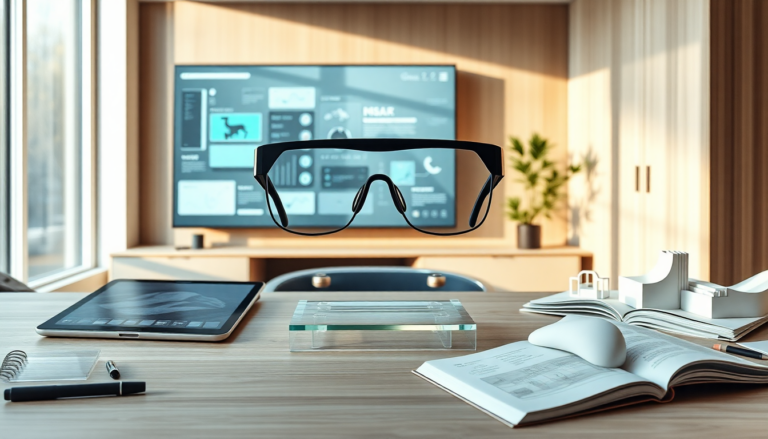Argomenti trattati
The augmented reality (AR) glasses market is buzzing with excitement, especially with Xreal stepping up to the plate with its impressive new model, the One Pro. This device isn’t just another gadget; it represents a significant leap in AR technology, boasting a sleek design and enhanced functionalities. But as this market evolves, so do the challenges—particularly around pricing—which raises some important questions about accessibility and value. In this article, we’ll dive into the One Pro’s features, user experience, and what its pricing might mean for the broader market dynamics.
Market Overview: Understanding the Landscape of AR Glasses
As we explore the AR glasses landscape, it’s clear that user expectations and technological capabilities are evolving rapidly. Xreal’s latest offering, the One Pro, targets a niche market segment that demands high-quality performance and cutting-edge features. With a lightweight frame and a groundbreaking flat-prism lens design, it expands the field of view to an impressive 57 degrees—a notable upgrade from its predecessor. Plus, the integration of electrochromic dimming allows users to adjust light filtering based on their environment, making for an even more immersive experience.
However, there’s a flip side to this innovation: pricing. With a preorder price of $599, which jumps to $649 when it becomes generally available, the One Pro is positioned as a premium product. This pricing strategy comes against a backdrop of increasing competition in the AR sector, which could shift how consumers perceive and demand these devices. As the market gets crowded, the success of high-end devices like the One Pro will depend on their ability to deliver unique value that justifies the investment.
Feature Analysis: What Sets the One Pro Apart?
The Xreal One Pro is not just another pair of AR glasses; it’s a meticulously crafted device that combines advanced technology with a user-centric design. One standout feature is the new flat-prism lens, which reduces the device’s bulk while enhancing visual clarity. This innovation is essential for content consumption and interactive applications—think of it as elevating your viewing experience to a whole new level.
Another exciting aspect is the improved user interface, now equipped with programmable buttons for seamless navigation. And let’s not forget about the Xreal Eye accessory, which adds 6DoF tracking capabilities, making interactions with virtual content even more engaging. However, while the Eye accessory enriches the One Pro’s functionality, some users have raised concerns about image quality in low-light conditions, which could be a deterrent for potential buyers.
The audio experience, delivered by integrated open-air speakers, is commendable but may not satisfy audiophiles who crave the immersive quality of noise-cancelling headphones. Striking a balance between these features and their practical implications for everyday use will be crucial for building user loyalty and expanding market reach.
When considering the investment potential of the Xreal One Pro, potential buyers should weigh the short-term and long-term implications of their purchase. Yes, the initial price tag of $599 or $649 might seem steep for a device that could be seen as a luxury item. However, the advanced features could deliver substantial value, especially for professionals in design, engineering, and entertainment fields.
Like any high-end technology, the key lies in the return on investment (ROI) associated with the device. For early adopters and tech enthusiasts, the One Pro may unlock opportunities for enhanced productivity and creativity. Plus, as the technology matures, the resale value of such devices might appreciate—especially if Xreal establishes itself as a leader in AR solutions.
For investors, understanding demand trends within the AR market and consumer behavior will be paramount. With a growing interest in immersive technologies, Xreal’s positioning could solidify its status as a frontrunner or expose it to market volatility risks. As we move forward, keeping an eye on consumer feedback and market responses will provide critical insights into the sustainability of Xreal’s pricing strategy.
Conclusion: Looking Ahead in the AR Market
The Xreal One Pro signifies an exciting advancement in augmented reality technology, blending innovative features with a user-friendly design. Yet, as the market grapples with pricing and competition, the future of AR glasses will hinge on their ability to offer compelling value to consumers.
As we look ahead, it will be essential to monitor how Xreal adapts to market feedback and shifting consumer demands. The potential for growth in the AR sector remains substantial, but success will ultimately rely on balancing innovation with affordability. Only time will tell if the One Pro can carve out a sustainable niche in this dynamic landscape.

